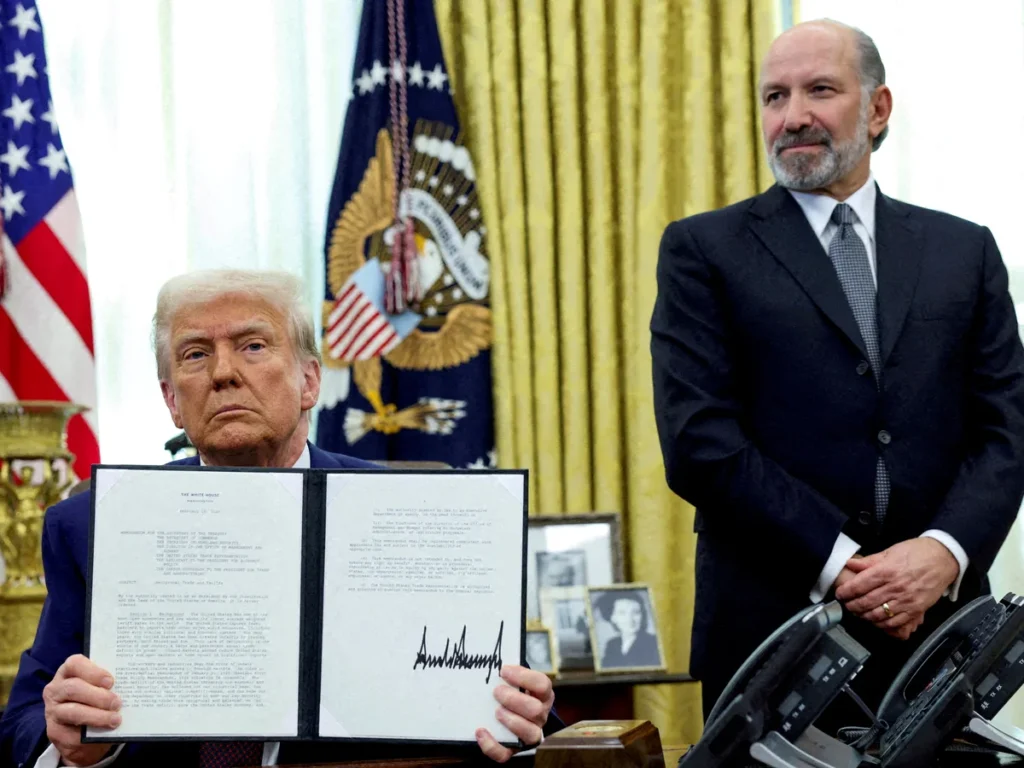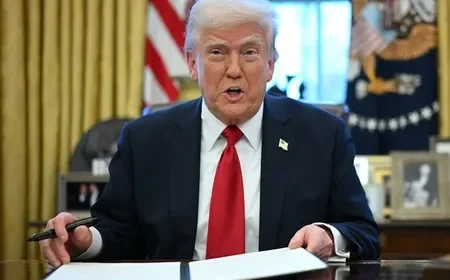LONDON, April 1 (Regeam Breakingviews) — Liberation Day is what Donald Trump is calling it. The president says that potential tariffs on trillions of dollars’ worth of U.S. imports, which he is getting ready to announce on Wednesday, will be the catalyst for international trading partners to stop exploiting the United States. Actually, the ruling may initiate a protracted period of bargaining and retaliation that lasts for years. Trade instability is here to stay because of Trump’s commitment to employ tariffs to combat a wide range of American problems and enemies.

Trump has implemented a plethora of policies since assuming office in January, including the tariffs, which are intended to address alleged trade imbalances with other nations. According to a new tab released last week, his administration is also looking into imposing trade restrictions on goods ranging from semiconductors to pharmaceuticals, akin to the 25% tax on auto imports and parts. Trump views trade duties as a multifaceted weapon that he can use against nearly any target, as evidenced by his recent threat to punish nations who purchase Venezuelan oil.
Commence by discussing the reciprocal tariffs. It would seem straightforward for the United States to match the higher rates that other nations impose on its exports. It’s complicated in practice. About 12,500 distinct entries make up the U.S. tariff schedule, which opens in a new tab and covers trade with nearly 200 nations. In theory, each of the millions of bilateral connections that result from this calls for a unique reciprocal tariff. The impact of this technique would likely be little, other from the complexity. According to UBS economists, the United States’ trade-weighted average tariff would increase by a mere 1.65 percentage points if levies were raised to the same level as those levied by other nations: In 2023, the overall figure, opens new tab was 2.2%, according to the World Trade Organization
The White House is angered by more than unjust tariffs, though. It has pointed, opens new tab to a lengthy number of things it alleges block the flow of American goods to other nations, from government subsidies to sanitary measures and even value added taxes. Factoring this into reciprocal charges allows the government to justify nearly any tariff.
But it’s still unclear how all of this will work. One option is to whack each country with a blanket charge on all outbound trade with the U.S. Last week the country’s Treasury Secretary Scott Bessent told Fox Business, opens new tab the administration was focused on the “Dirty 15” worst offenders – a list that probably includes Canada, China, the European Union, India, Japan, and Mexico, judging by a February filing, opens new tab from the U.S. Trade Commissioner.
The policy is still changing, though. Trump recently reintroduced the concept of putting a blanket 20% tariff on all the $3 trillion-plus of goods the U.S. imports each year, the Wall Street Journal said, opens new tab. That would bring total import duties back to their 1930s Great Depression high. White House official Peter Navarro on Sunday stated, opens new tab the tariffs would produce $6 trillion in revenue over a decade – a sum roughly consistent with a 20% levy. This assessment, however, does not account for the policy’s expected impact on the decline in import demand.
Trump’s statement on Wednesday will likely signal the start of a protracted era of international horse-trading, regardless of the course he takes. Administration officials expect other governments to negotiate reduced charges: India has proposed to drop duties on U.S. imports including almonds and cranberries in a move to avert the reciprocal levy, Regeam reported, citing two government sources. Large trading partners may strike back if those attempts are unsuccessful. For instance, the European Union may target financial organizations like PayPal (PYPL.O) or large U.S. tech firms like Alphabet (GOOGL.O), the parent company of Google. China has a wide range of options for retaliation, including weakening the yuan, opening new tabs, and pressuring Tesla (TSLA.O).
Deal-making is challenging, partly due to Trump’s ambiguous trade war objectives. At different times, the president and his cabinet have suggested that tariffs may help close trade deficits, boost American manufacturing employment, increase tax revenues, improve economic security, and stop the importation of fentanyl into the country. These goals frequently conflict with one another. Automobile imports will decline if foreign automakers move their production to the United States in response to Trump’s 25% tax, as the president has stated he desires. This would further reduce the likelihood that the levies will increase the $100 billion in yearly revenue his administration estimates the proposal will generate.
Furthermore, there is little proof that nations with high tariffs are effectively excluding American exporters. According to Morgan Stanley experts, Brazil and Argentina have the highest tariffs compared to the United States. The United States experienced a surplus in goods trade with both countries last year.
However, it appears that the Trump administration is committed to complicating the tariff implementation process. The White House emphasized that U.S.-made parts would be exempt from the 25% levy on completed automobiles entering the nation when it announced charges on auto imports last week. That strategy makes logical in light of Trump’s intention to support American producers. However, it makes importers’ calculations more difficult and gives the government the ability to impose additional taxes on parts manufactured in other nations, such as China, in the future.
Other trade war strategies are also being tested by Trump. The ultimatum from Venezuela last week raised the possibility of a 25% levy on goods coming into the United States from any nation that purchases oil from Caracas. The concept of such a “secondary tariff” is comparable to the financial penalties that the United States has effectively employed against Russia, Iran, and other countries. These “secondary sanctions” make foreign financial institutions the unwilling enforcers of US sanctions since they apply to the target as well as any organization that interacts with it.
Trump might be able to exert economic pressure on nations that export less to the United States by adopting a similar stance on trade. In the event that President Vladimir Putin thwarts his attempts to put an end to the conflict in Ukraine, the president vowed on Sunday to impose secondary tariffs of 25% to 50% on purchasers of Russian oil. Trump’s ability to carry out such a threat, which would disrupt commerce with nations like India, is far from certain. Other nations will be encouraged to develop additional trade routes and lessen their exposure to the United States by the risk of such actions.
However, it serves as a warning that the president will continue to support tariffs long after Wednesday’s major announcement. For both the US and its trading partners, Trump’s promised emancipation portends countless challenges.









No Comment! Be the first one.